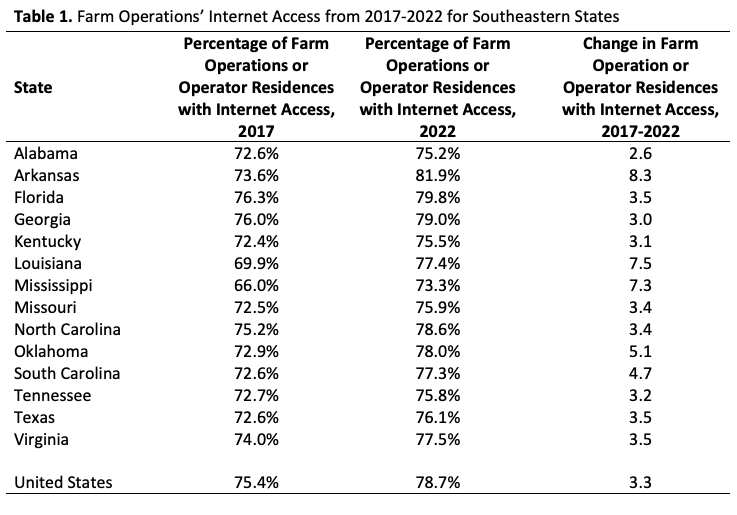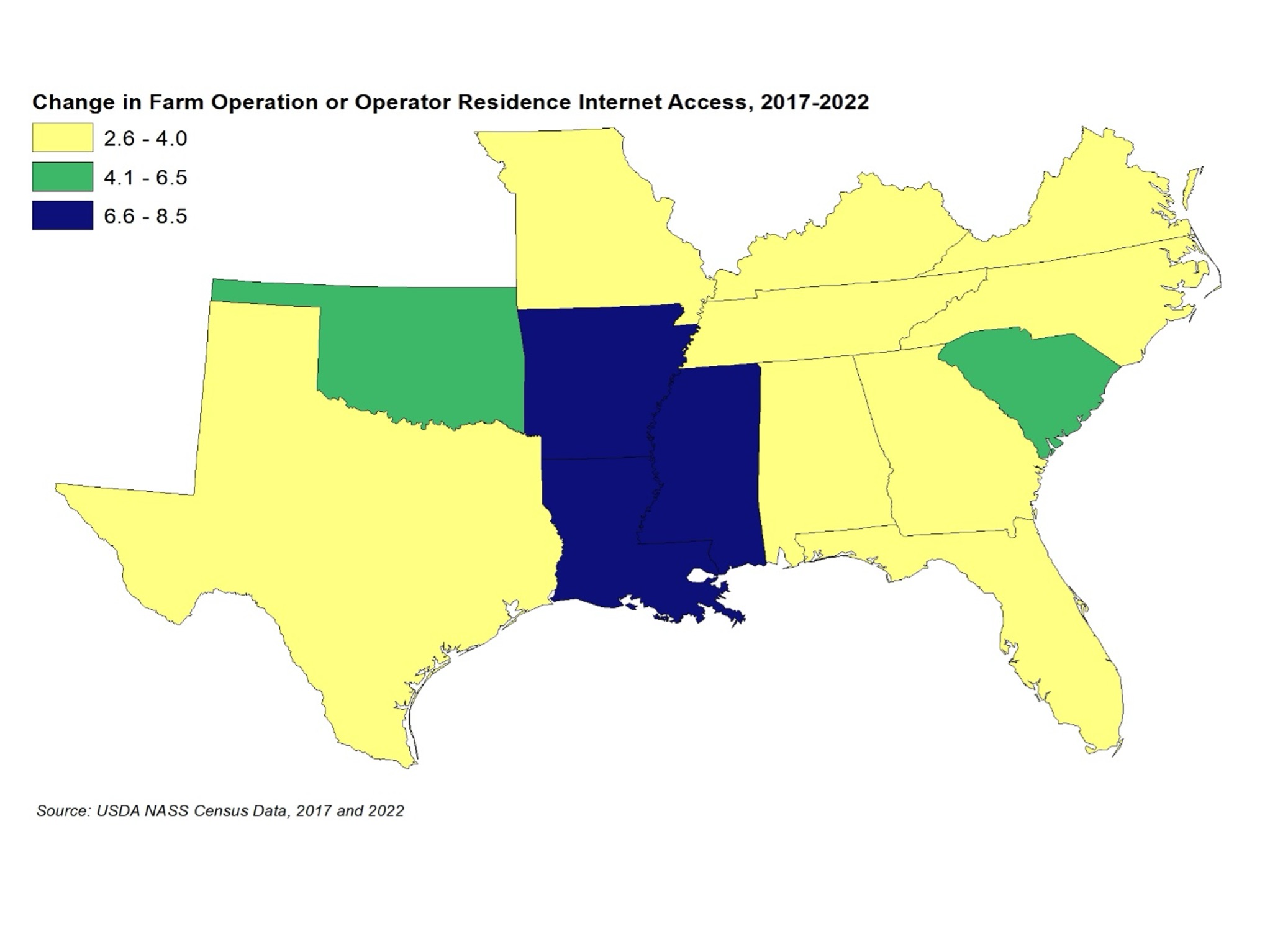The internet is an essential part of daily life for many Americans. For farmers, it allows them to get up-to-date prices, discover available farm programs, or get information from places like Southern Ag Today. Agriculture is seeing many technological advances with tools such as precision agriculture and autonomy. Reliable access to the internet is increasingly necessary to take full advantage of these newer technologies. To that end, there have been several government programs initiated to provide more access to the internet across the U.S. The Rural Digital Opportunity Fund (RDOF) was announced in 2019 and is focused on improving internet access for rural Americans with $20.4 billion in funding in a ten-year period. The Broadband Equity, Access, and Deployment (BEAD) Program has provided $42.45 billion to increase high-speed internet access across all 50 states in the upcoming years. Every state now has a state broadband office that deals solely with improving internet access in their state. For example, Mississippi has the Office of Broadband Expansion and Accessibility of Mississippi (BEAM).
Internet access for producers has seen modest improvements from 2017 to 2022 based on U.S. Census data (Table 1; Figure 1). Across the U.S., the percentage of farm operations or operator residences with internet access increased from 75.4% in 2017 to 78.7% in 2022. While many of the southeastern states still lag behind the U.S. average, most of the states had significant increases in producers’ internet access over this time period. Of the 14 southeastern states examined, 10 had a higher percentage increase than the U.S. average. Arkansas had the highest increase of 8.3%, followed by Louisiana with an increase of 7.5%, and then Mississippi with an increase of 7.3%. Even so, there is still a surprisingly large number of producers, 21.3%, who do not have access to the internet. This is important for government agencies and universities to understand and make sure that the information they provide is available to all producers.
It should be noted that simply having access to the internet does not necessarily mean that the internet is reliable or has the speed to be effective for producers. For the measure described here, internet access can be obtained through 1) a Cellular data plan, 2) Satellite Internet, 3) Broadband (high-speed) Internet service such as cable, fiber optic, or DSL service, or 4) Dial-up Internet. Some of these options are not adequate to use for precision agriculture. The FCC’s Task Force for Reviewing the Connectivity and Technology Needs of Precision Agriculture in the United States recommends a minimum performance of 100 Mbps download and 20 Mbps upload to support precision agriculture. The percentage of farmers who have internet that can actually support precision ag technologies would be considerably less than that described above. However, programs, such as BEAD, are prioritizing the buildout of fiber optic internet to ensure reliable and fast connections. Fiber optic internet would meet the FCC performance recommendations and allow producers to more easily adopt new technologies and gain the efficiencies that come with them. Currently, many producers in the Southeast are still at a disadvantage, in terms of their internet access compared to other regions. This disadvantage could affect producers’ ability to easily access information and adopt new technologies to improve their operations.

Figure 1. Percentage Change in Farm Operations or Operator Residences Internet Access from 2017 to 2022.

References
FCC. (2021). Task Force for Reviewing the Connectivity and Technology Needs of Precision Agriculture in the United States. Available at: https://www.fcc.gov/sites/default/files/precision-ag-report-11102021.pdfUSDA NASS Census Data. (2024). Percentage of Farm Operations or Operator Residences with Internet Access. Available at: https://quickstats.nass.usda.gov/
Mills, Devon, and Brian E. Mills. “Farmers’ Internet Access Improving but Still Lacking.” Southern Ag Today 4(33.3). August 14, 2024. Permalink

Leave a Reply